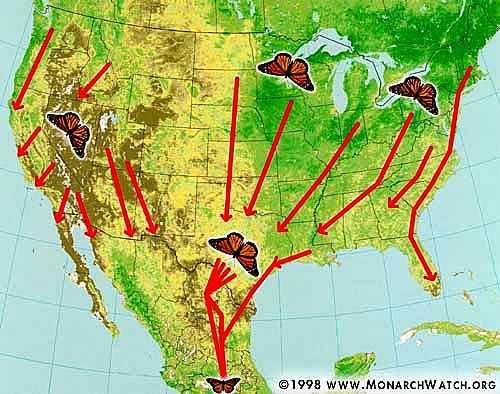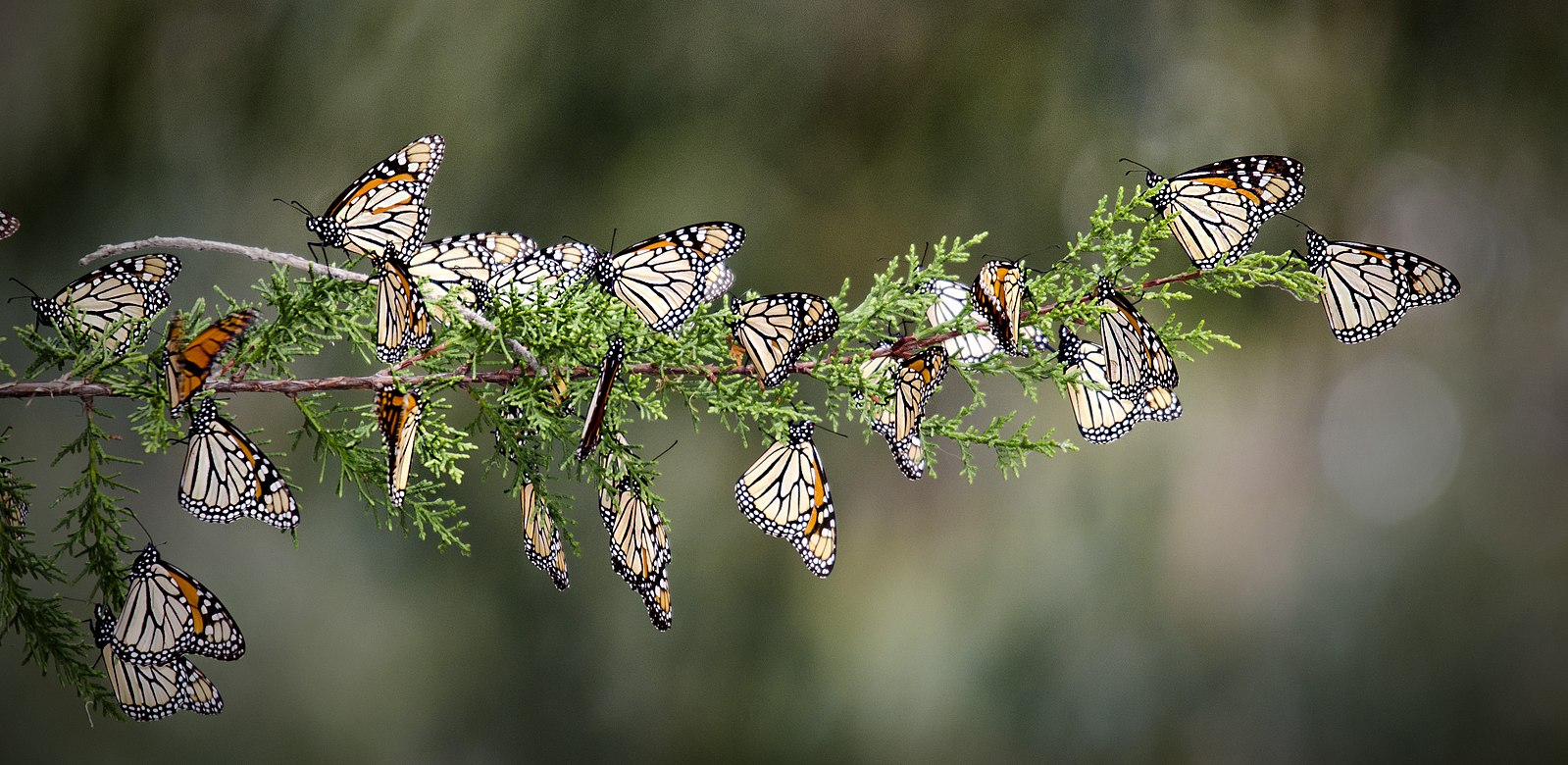When Best Intentions Backfire
Monarch butterfly (credit: Wiki-commons)
Everyone loves monarch butterflies and everyone wants to help them. The iconic orange insects make yearly, long-distance migrations from their summers in southern Canada to wintering roosts among pine and spruce forests in Mexico. A shorter trek occurs in California. However, the butterfly's routes through the mid-western USA have been disrupted by clearing of their natural feeding habitat and the widespread use of agro-chemicals to control weeds on industrial farms.

Monarch Butterfly Migration Map (credit: Monarch Watch.org)
The butterfly's primary food source is the milkweed plant (Asclepias) represented by several species native to Midwestern states. To help the butterflies, school kids, organic farmers, and home gardeners have been encouraged to plant milkweeds to assist the butterflies along to their wintering pines.


Monarch on native milkweed (credit: Science) Caterpillar wintering on Caifornia conifer (Wikipedia)
Unfortunately, many of these intentional plantings have produced a significant problem in themselves. Science Magazine reports a lack of native milkweed planting supplies and the species planted have produced a double disaster for the butterflies. Many plants available and used are a tropical species of milkweed (Asclepias curassavica) but this species is ecologically inappropriate for the butterflies when the caterpillars feed on it. Tropical milkweeds don't die-back in winter so the monarchs halt their migration in Texas and Louisiana. The South American milkweed also harbors a parasitic microbe that infects feeding caterpillars making the resulting butterflies weaker and unable to fly the remaining distances to central Mexico. Monarch populations and their migrations continue to decline.
To address the problem for milkweed planters the Xerces Society, that promotes insect conservation, has developed a Milkweed Seed Finder for sources of appropriate planting materials. Hopefully, gardeners will support these suppliers and plant the correct species along the insect's mid-western travel routes. Luckily, recent success has been observed in populations of the revered butterfly with an increase in Mexico from favorable environmental conditions. The butterflies will still need to contend with the future impacts of climate change on their summer and winter range. WHB